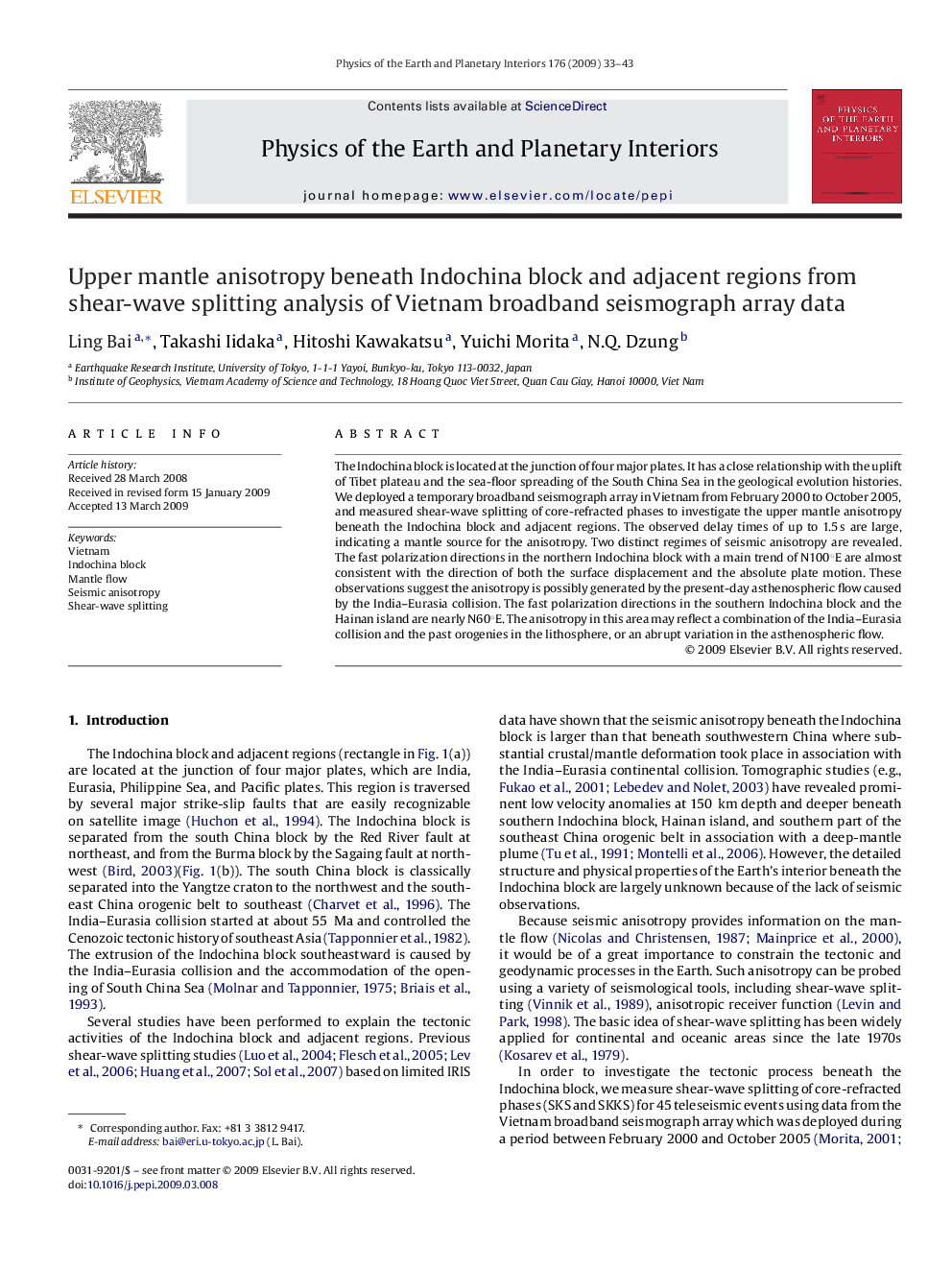| Article ID | Journal | Published Year | Pages | File Type |
|---|---|---|---|---|
| 4742273 | Physics of the Earth and Planetary Interiors | 2009 | 11 Pages |
Abstract
The Indochina block is located at the junction of four major plates. It has a close relationship with the uplift of Tibet plateau and the sea-floor spreading of the South China Sea in the geological evolution histories. We deployed a temporary broadband seismograph array in Vietnam from February 2000 to October 2005, and measured shear-wave splitting of core-refracted phases to investigate the upper mantle anisotropy beneath the Indochina block and adjacent regions. The observed delay times of up to 1.5 s are large, indicating a mantle source for the anisotropy. Two distinct regimes of seismic anisotropy are revealed. The fast polarization directions in the northern Indochina block with a main trend of N100°E are almost consistent with the direction of both the surface displacement and the absolute plate motion. These observations suggest the anisotropy is possibly generated by the present-day asthenospheric flow caused by the India-Eurasia collision. The fast polarization directions in the southern Indochina block and the Hainan island are nearly N60°E. The anisotropy in this area may reflect a combination of the India-Eurasia collision and the past orogenies in the lithosphere, or an abrupt variation in the asthenospheric flow.
Related Topics
Physical Sciences and Engineering
Earth and Planetary Sciences
Geophysics
Authors
Ling Bai, Takashi Iidaka, Hitoshi Kawakatsu, Yuichi Morita, N.Q. Dzung,
